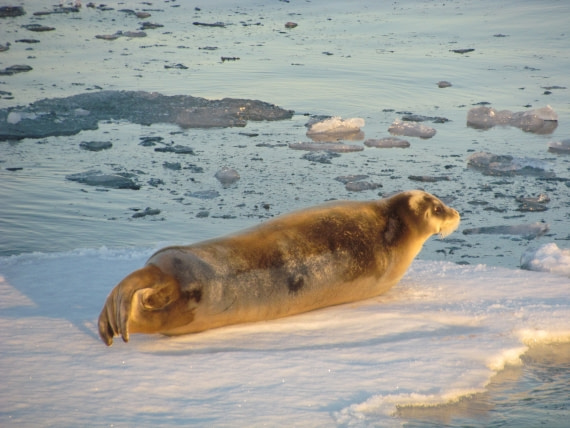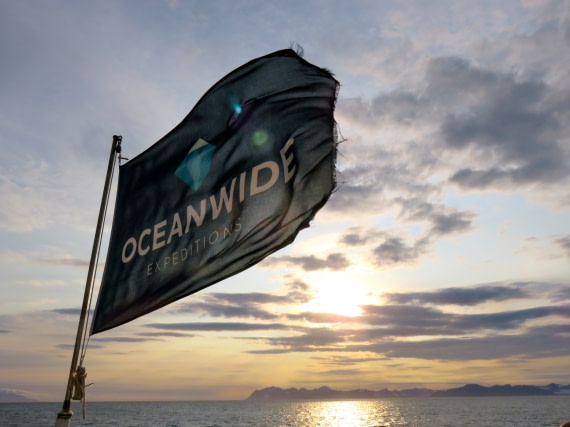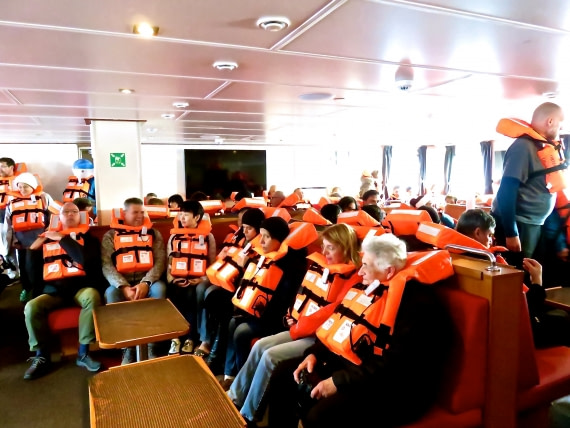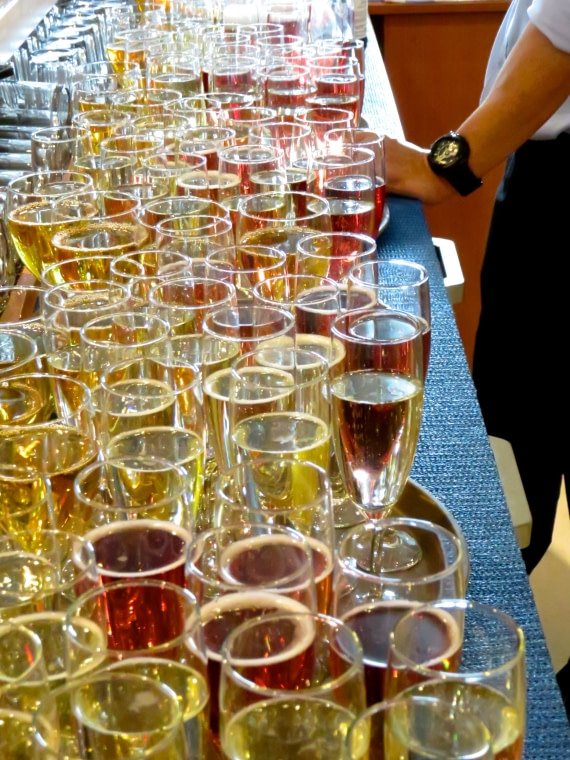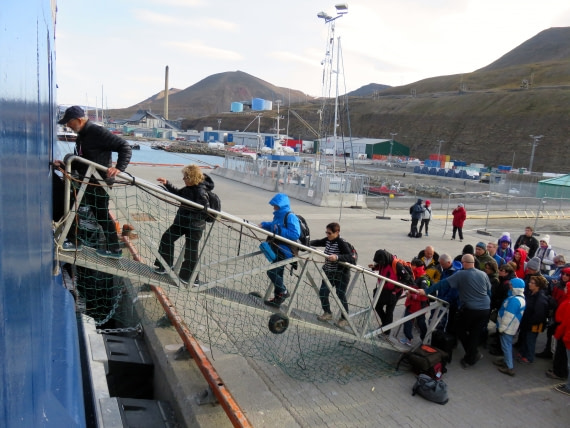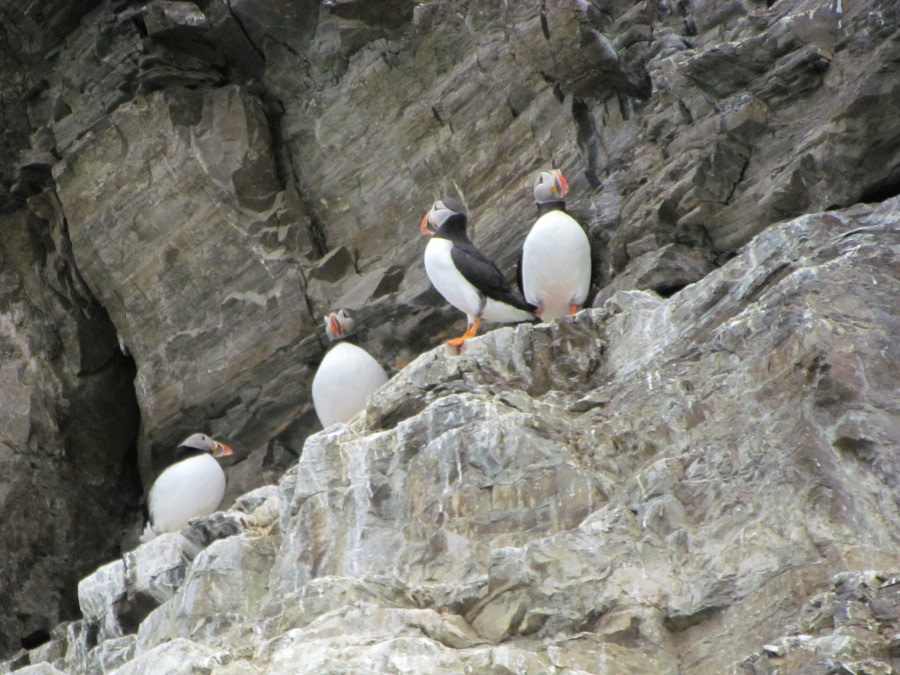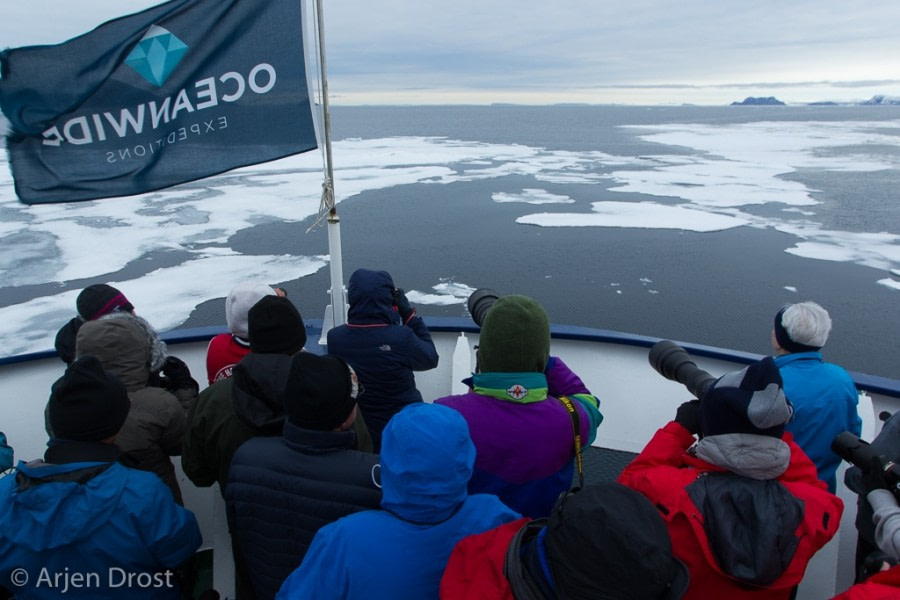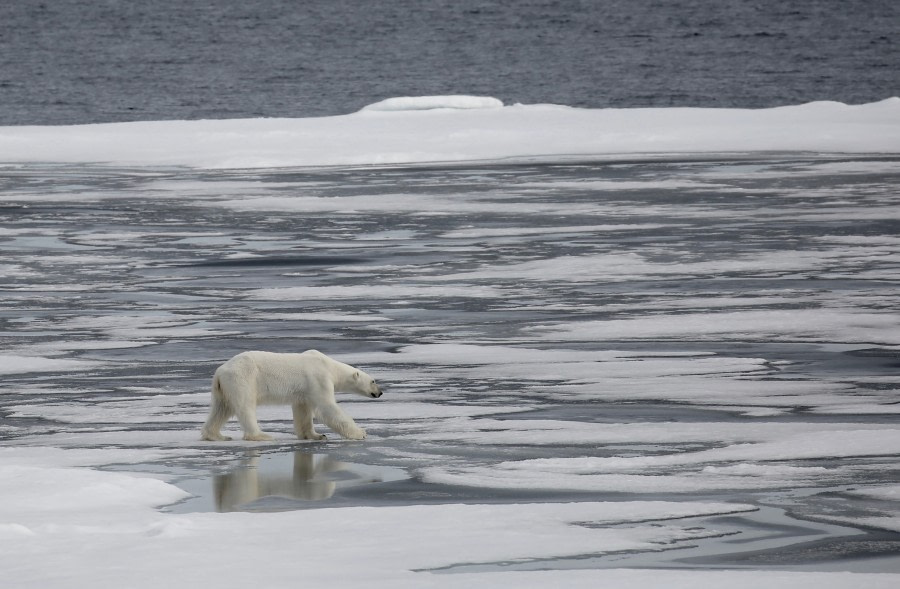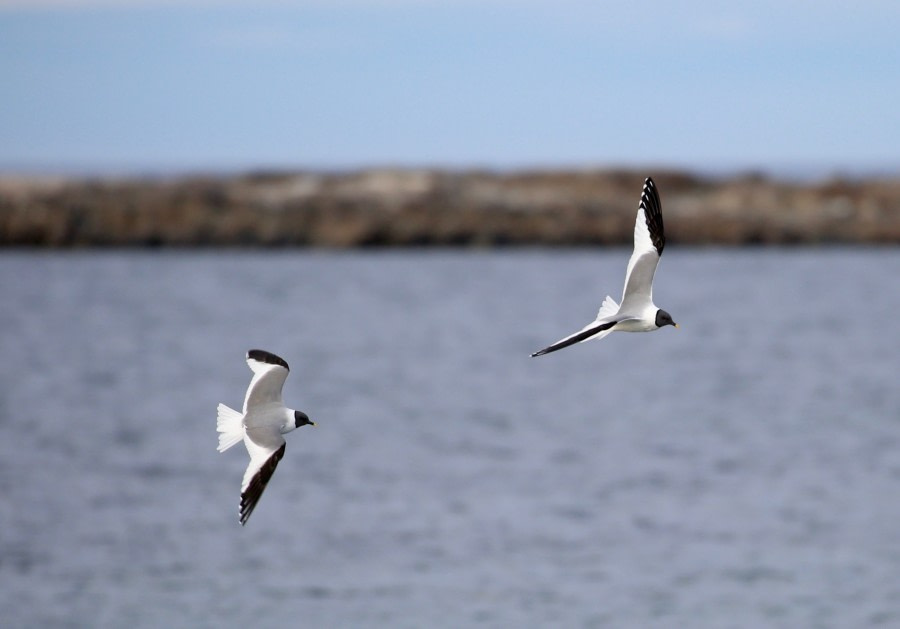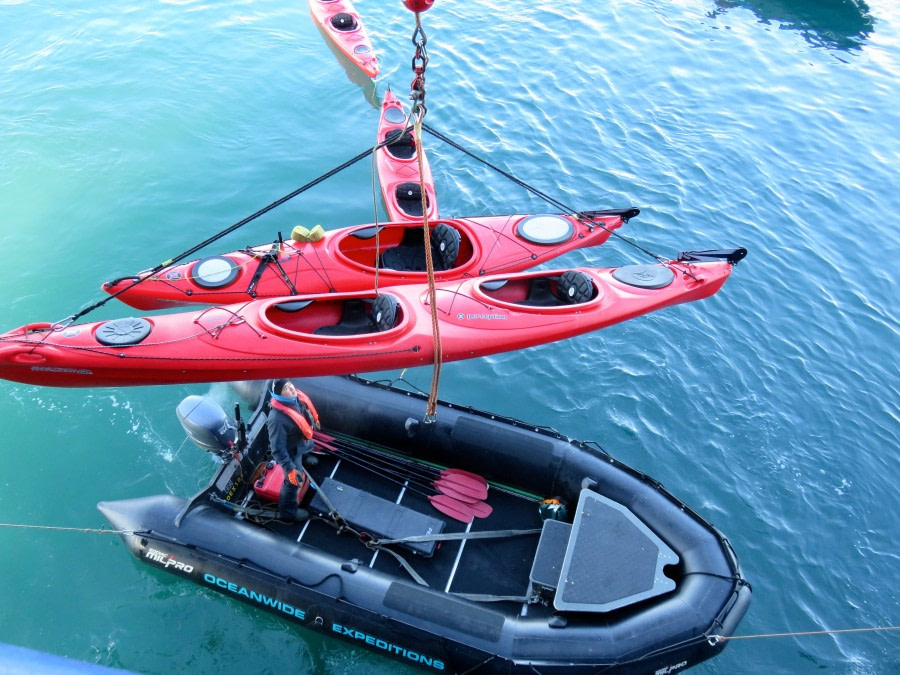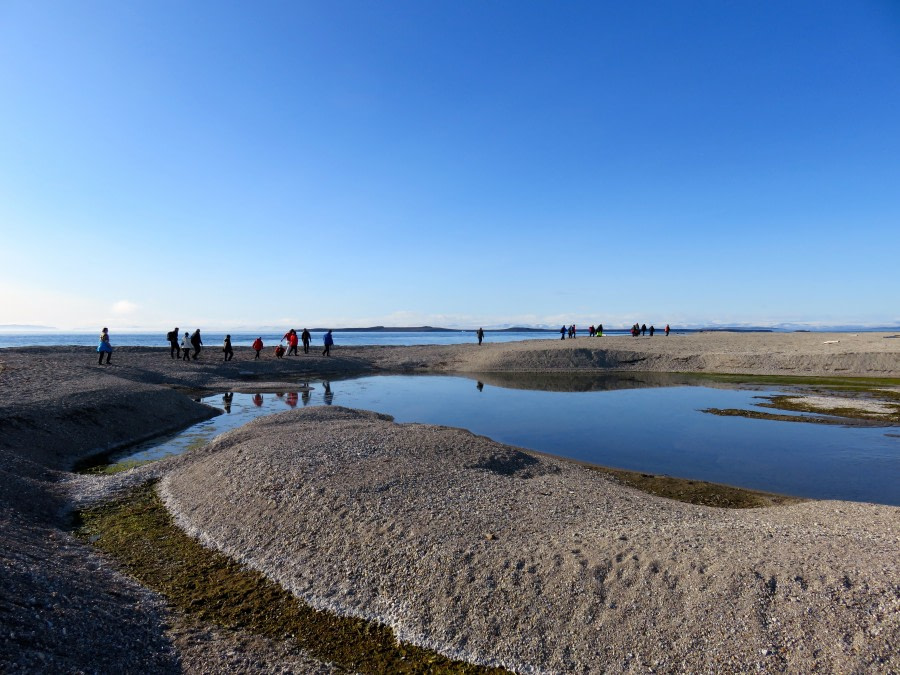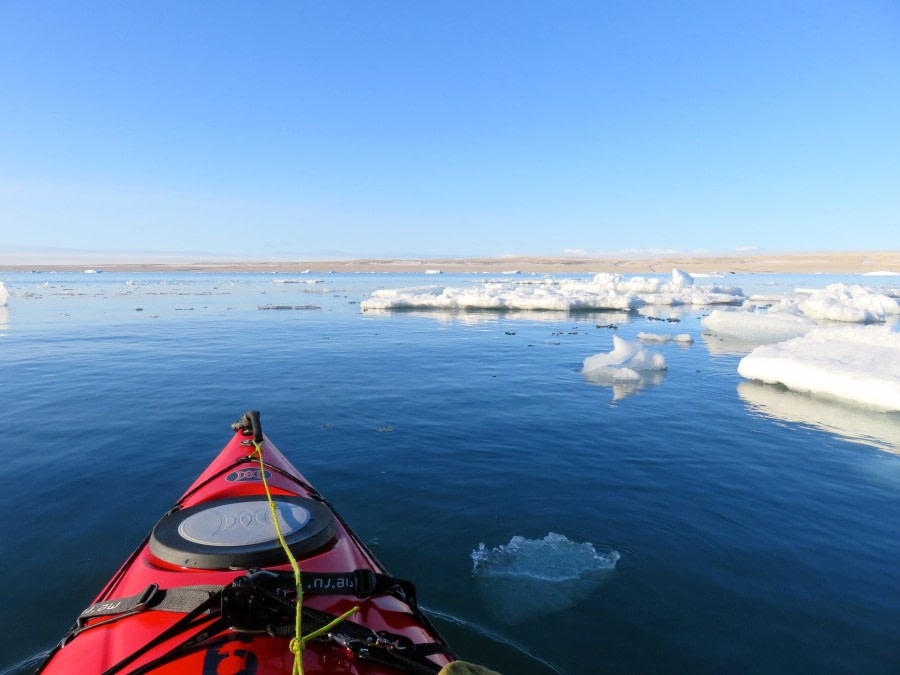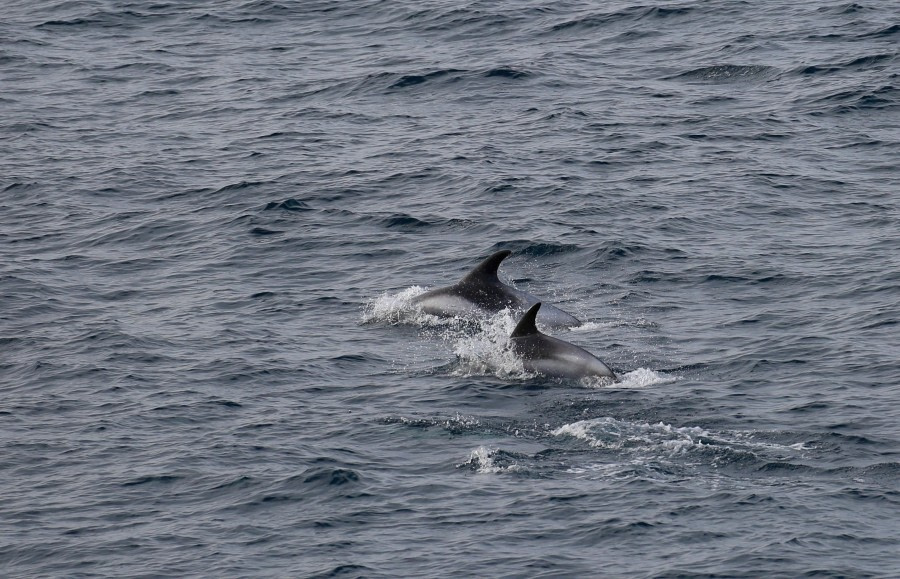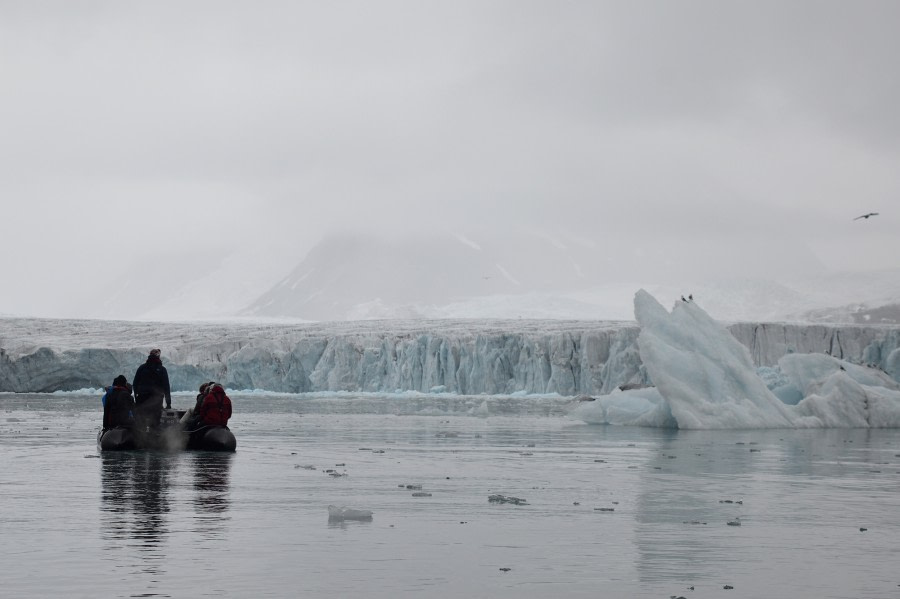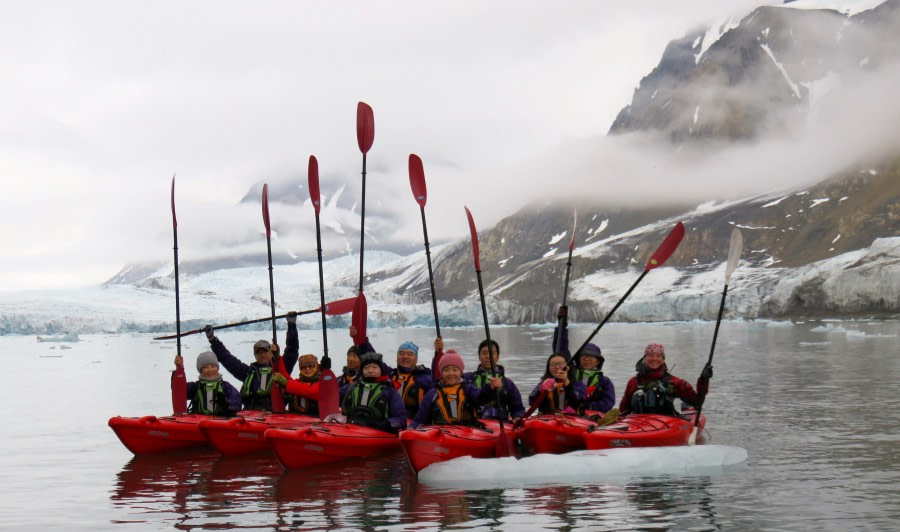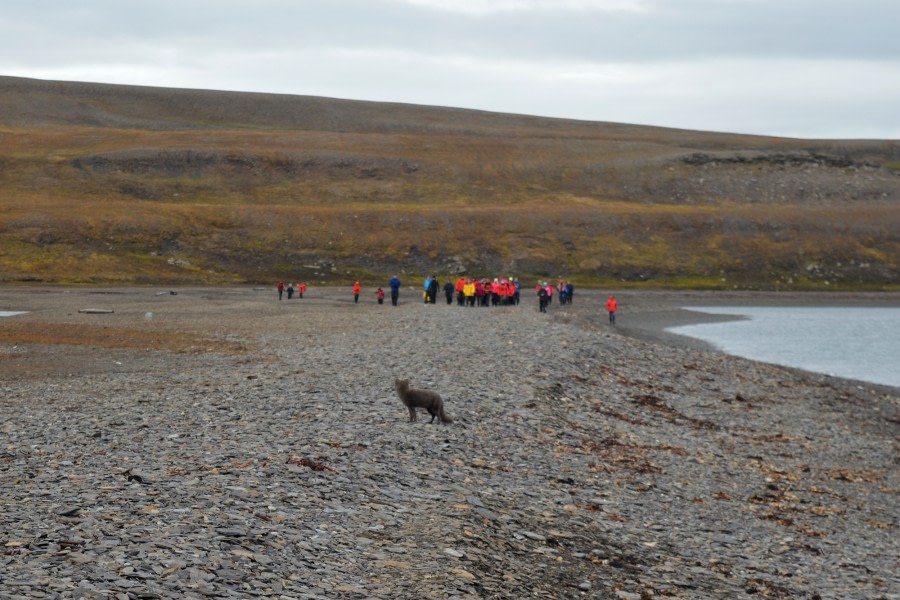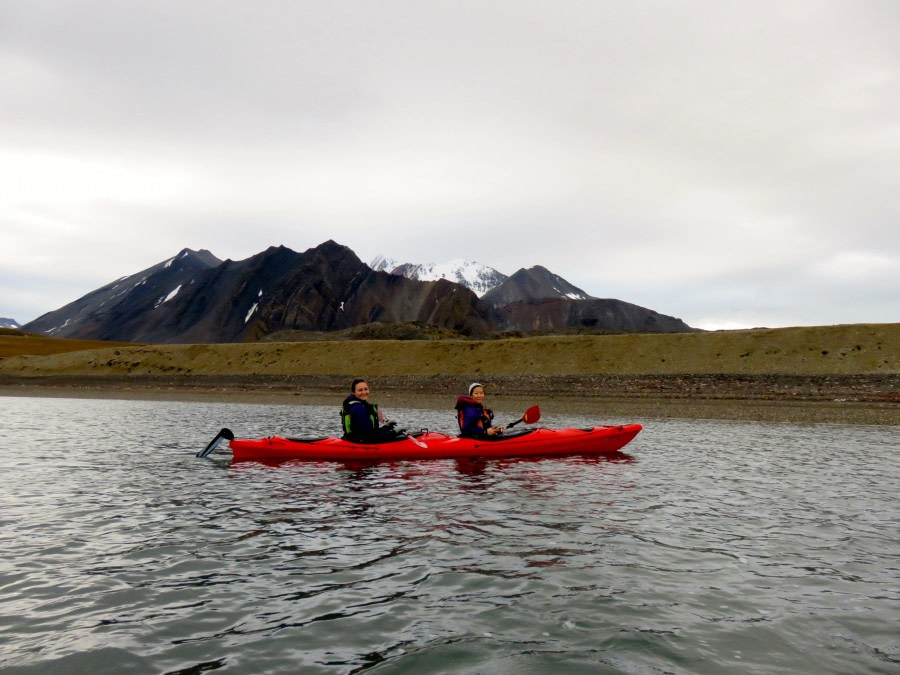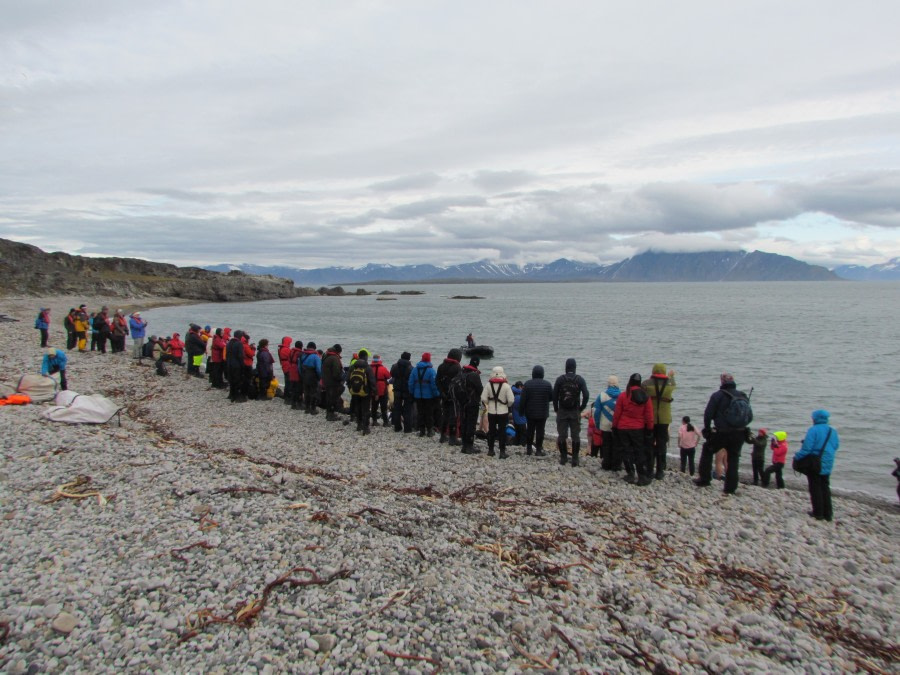| Datum: | 21.08.2017 |
| Position: | 78°14.1' N, 015°36.6' E |
| Wind: | NNW 3/4 |
| Wetter: | Teilweise bewölkt |
| Lufttemperatur: | +14 |
Seit der Gründung von Longyearbyen als Kohlebergbausiedlung im Jahr 1906 durch John Munro Longyear war die Stadt Ausgangspunkt für viele historische und bahnbrechende Expeditionen. Die Stadt hat eine ständige Bevölkerung von etwa 3.000 Einwohnern, aber diese Zahl steigt im Sommer durch die Ankunft von Tausenden von Kreuzfahrttouristen, die bereit sind, die Inselgruppe Svalbard zu erkunden, beträchtlich an. Unser Abenteuer begann mit der Einschiffung in unser komfortables schwimmendes Zuhause für die nächsten zehn Tage - die M/V Ortelius am Pier in Longyearbyen. Um 16:00 Uhr wurden wir an der Gangway von Mitgliedern des Expe-dition-Teams in Empfang genommen, die uns zur Rezeption des Schiffes führten, wo wir eingecheckt und zu unseren komfortablen Kabinen gebracht wurden. Sobald wir uns in unserem komfortablen Zuhause eingerichtet hatten, gingen die meisten von uns entweder auf die Außendecks, um die Aussicht zu genießen, oder in die Bar, um einen Kaffee oder Tee zu trinken. Bald war es an der Zeit, sich im Vortragsraum zu versammeln, wo mehrere Willkommens-Briefings stattfanden. Der Zweite Offizier Louis informierte uns über die Sicherheit an Bord und darüber, wie wir uns auf das Verlassen des Schiffes vorbereiten können, falls der schlimmste Fall an Bord eintreten sollte. Dann gab uns unsere Hotelmanagerin Zsuzannah einen Überblick über die Ortelius, unser Zuhause für die nächsten 9 Tage. Nach einer Übung des Generalalarms, bei der sieben kurze Töne gefolgt von einem langen Ton ertönten, legten wir alle unsere orangefarbenen SOLAS-Schwimmwesten an und versammelten uns unter Anleitung der Besatzung und des Personals in der Bar. Nach einem Appell, bei dem wir uns vergewisserten, dass alle anwesend waren, begaben wir uns zu den Rettungsbooten, wo es an Deck sehr windig war, als wir den Isfjord hinunterfuhren, und einige von uns gingen sogar ins Innere, um die gemütliche Umgebung zu erkunden! Wir kehrten kurz in unsere Kabinen zurück, bevor wir uns mit Kapitän Ernesto Barria in der Lounge versammelten, um mit Sekt oder Saft auf das bevorstehende Ereignis anzustoßen. Bei dieser Gelegenheit lernten wir auch die Mitglieder des Expeditionsteams kennen, die uns an Land begleiten und während unserer Zeit in Spitzbergen für unsere Sicherheit sorgen werden. Das übliche gesellige Beisammensein wurde jedoch vorzeitig beendet, da vor dem Schiff einige Walstöße gesichtet worden waren. Ein großartiger Start für unsere Reise! Wir konnten eine Reihe von Schlägen vor und auf der Backbordseite des Schiffes sehen, und die Wale wurden als Finnwale identifiziert, die zweitgrößte Walart der Welt. Dann war es an der Zeit, sich in den Speisesaal zu begeben, um das erste von vielen köstlichen Mahlzeiten einzunehmen, die von Gabor und seinem Kombüsen-Team zubereitet wurden. Währenddessen bahnte sich die Ortelius ihren Weg durch den Isfjord in Richtung offenes Meer. Nach dem Abendessen gab es noch eine letzte Aufgabe zu erledigen, und zwar die Abholung der Gummistiefel und Schwimmwesten aus dem Vortragsraum. Das Personal sorgte dafür, dass wir die richtige Größe und Passform bekamen und am nächsten Morgen auf Spitzbergen an Land gehen konnten.

